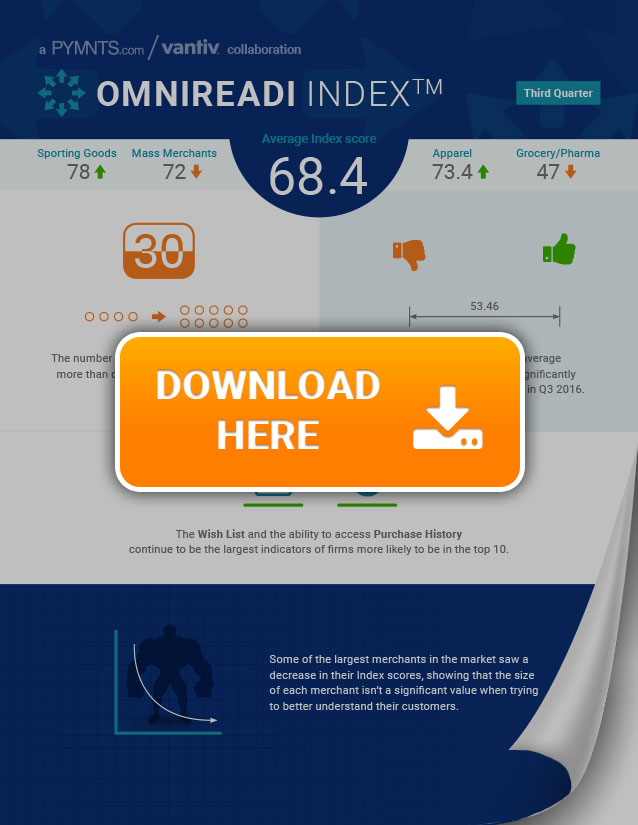As The OmniReadi Gap Widens (And Stagnates)

The disparity between the most and least omnireadi merchants is getting to be downright cavernous. According to the new Q3 2016 OmniReadi Index™, the top 10 percent of merchants improved their omnichannel scores by 16 percent over last quarter, while the bottom 10 percent saw theirs drop by more than 40 percent. And, in between, growth is slowing. That, along with more than 800 data points on the state of retail’s omnireadiness inside the hot-off-the-presses Omnireadi Index.
There’s a growing gap when it comes to being OmniReadi.
According to the Q3 2016 PYMNTS OmniReadi Index™, the top 10 percent of merchants improved their omnichannel scores by 16 percent over the last quarter, while the bottom 10 percent saw theirs drop by more than 40 percent. And it isn’t just a gap between merchants that’s widening. Scores in industries with strong records of omnichannel success, such as sporting goods retailers, continue to improve, while low-scoring businesses, like grocers and pharmacies, continue to dive. That means that plenty of grocery stores, pharmacies and other retailers continue to miss out on their share of the billions of dollars spent by consumers online every year.
Other key takeaways from the Q3 2016 Index include:
- Omnireadiness is stagnating. Growth has slowed since the end of the 2015 shopping season, and the index scores have dropped slightly, across the board, each quarter after Q4 2015.
- Top performers, like sporting goods and electronics retailers, don’t neglect their brick-and-mortar businesses. They continue to improve their checkout process and implement new technology.
- 100 percent of the top 10 merchants use purchase history features, while none of the bottom 10 merchants and just 10 percent of the lower third of merchants offer purchase history functions.
The Index also features a conversation with Jesse Ness, at Ecwid, an online store solution provider that builds shopping carts and other omnichannel features for retailers. PYMNTS recently caught up with Ness to discuss the importance of shopping carts and wish lists to online retailers and how they are using them to crack the omnireadi puzzle.
Here’s a preview:
Many shopping carts collect purchase history information, including what items a customer purchased, when they purchased it and what other items they viewed or purchased during the same shopping trip. With this information, online retailers can predict other items consumers may be likely to buy and advertise those products to them.
This collected data is crucial for retailers to boost their profits as it lets them effectively target their customers’ wants and needs, Ness said.
“The biggest thing is to use these product recommendations as an upsell for our merchants,” he explained. “As a customer is adding certain products to the cart, if that merchant has other products that are related, any time you can put those items in front of a customer before they make a purchase, you can make a big increase in the average order value.”
To download the 2016 Q3 PYMNTS.com Omnireadi Index™, click below.
About The Index
The PYMNTS.com OmniReadi Index™, powered by Vantiv, was designed to quantify the consistency between the web and in-store shopping experience and determine if the mobile channel is helping, hurting or simply neutral to the overall situation.

